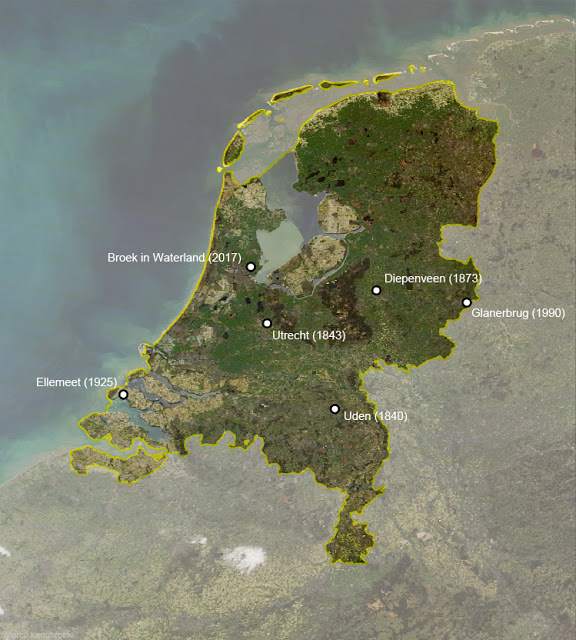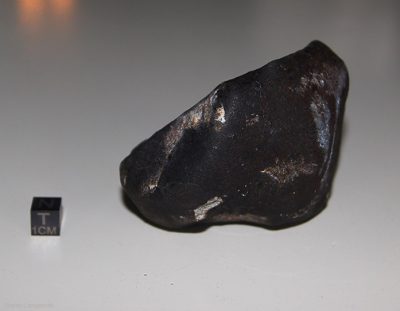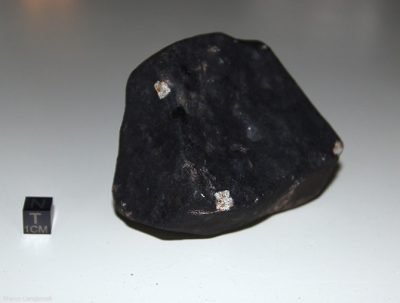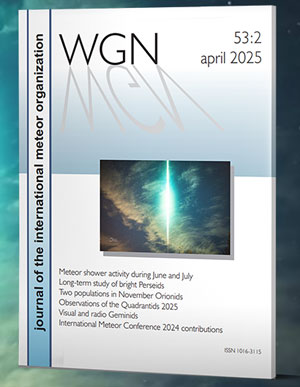On June 26, 2017, the most recently found Dutch meteorite was presented at the famous Natural History Museum in Leiden, the Netherlands. It is an L6 ordinary chondrite of 530 gram (including the 20 gram sample taken from it for identification purposes) that has been given the provisional name Broek in Waterland, after the rural village just north of Amsterdam where it fell earlier this year, on January 11.

The fireball that presumably dropped the meteor appeared over the Netherlands that day at 16h09m UT, just after sunset. As the Sun was only 3° below the horizon at that time, video and photographic networks over Belgium and the Netherlands were not yet operational, unfortunately. Despite dusk having barely set in, the fireball was seen by many people in these two countries. It was also caught by a dashboard camera in a car driving near Weerde, just south of Mechelen in Belgium, 165 km away from where the meteorite was dropped.

The next day (January 12), the owners of a garden shed in the village of Broek in Waterland discovered that something had smashed the roof of their shed. They found a blackened stone of 530 gram that might have been responsible for the damage. One of the owners, in an effort to understand what had happened, came eventually into contact with Niek de Kort of the Meteorite Documentation Center of the Royal Dutch Association for Astronomy and Meteorology, who in turn warned Leo Kriegsman and Marco Langbroek of the Dutch National Museum of Natural History in Leiden. With permission of the owners, a 20 gram sample was cut off for further investigation, which confirmed that it was indeed an L6 ordinary chondrite.
Analyses of fast-decaying isotopes by the Free University of Amsterdam further confirmed that it was a recent fall. In addition, examination of the video from the dashboard camera of the fireball the day before the meteorite was found revealed that the location where the meteorite fell was compatible with the direction of the fireball. The association between both events seems therefore very likely. Searches were organized to recover more fragments, but these were unsuccessful, unfortunately.
The map shows the locations where all six authenticated Dutch meteorites were found. They were all witnessed falls. Four of them fell before World War II. These four were all discovered because the meteorite fell close to a farmer working the fields. With the industrialization of agriculture after the War, such a coincidence became increasingly unlikely, however. It should therefore come as no surprise that the two postwar falls, Glanerbrug in 1990 and the current Broek in Waterland, were discovered in a different way, namely because they damaged a structure.
More information about this meteorite fall in the English language can be found in this article by Marco Langbroek, of which the above is a summary. The author wishes to acknowledge Marco Langbroek’s gracious permission to use his illustrations.






 You saw something bright and fast? Like a huge shooting star? Report it: it may be a fireball.
You saw something bright and fast? Like a huge shooting star? Report it: it may be a fireball.  You counted meteors last night? Share your results with us!
You counted meteors last night? Share your results with us!  You took a photo of a meteor or fireball? You have a screenshot of your cam? Share it with us!
You took a photo of a meteor or fireball? You have a screenshot of your cam? Share it with us!  You caught a meteor or fireball on video? Share your video with us!
You caught a meteor or fireball on video? Share your video with us!
2 comments